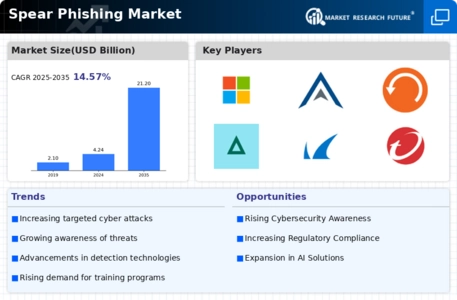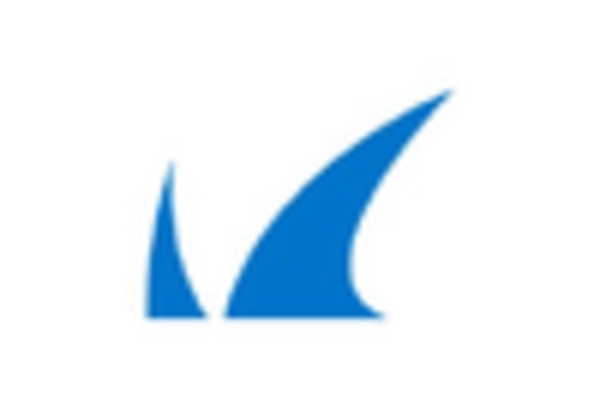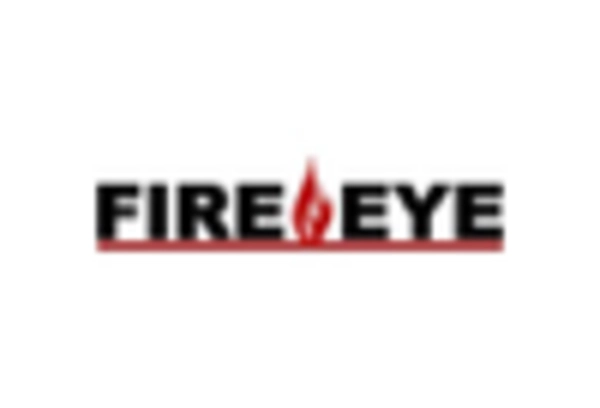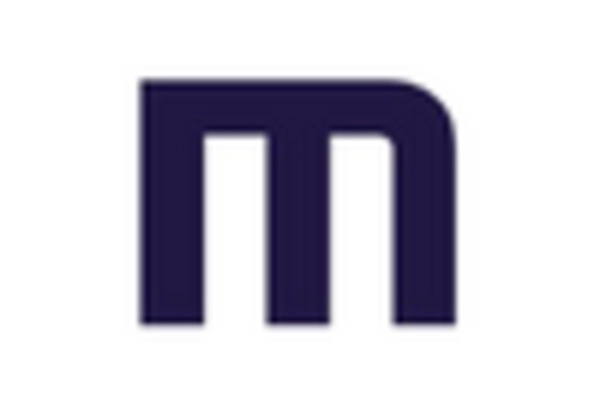The spear phishing market is characterized by a rapidly evolving competitive landscape, driven by increasing cyber threats and the need for advanced security solutions. Key players such as Proofpoint (US), Mimecast (GB), and Barracuda Networks (US) are at the forefront, each adopting distinct strategies to enhance their market positioning. Proofpoint (US) focuses on innovation through continuous development of its threat detection technologies, while Mimecast (GB) emphasizes partnerships with other cybersecurity firms to broaden its service offerings. Barracuda Networks (US) is actively pursuing regional expansion, particularly in emerging markets, to capture a larger share of the growing demand for spear phishing protection. Collectively, these strategies contribute to a competitive environment that is both dynamic and increasingly complex, as companies strive to differentiate themselves in a crowded marketplace.
In terms of business tactics, companies are increasingly localizing their operations to better serve regional markets, which appears to enhance customer engagement and responsiveness. The spear phishing market is moderately fragmented, with a mix of established players and emerging startups. This fragmentation allows for diverse approaches to combating spear phishing, as companies leverage their unique strengths to address specific customer needs. The collective influence of these key players shapes the market structure, fostering an environment where innovation and strategic partnerships are paramount.
In August 2025, Proofpoint (US) announced a significant upgrade to its email security platform, integrating advanced machine learning algorithms to enhance threat detection capabilities. This strategic move is likely to bolster its competitive edge by providing clients with more robust defenses against sophisticated spear phishing attacks. The integration of AI-driven solutions not only improves detection rates but also streamlines incident response, positioning Proofpoint (US) as a leader in proactive cybersecurity measures.
In September 2025, Mimecast (GB) launched a new initiative aimed at educating organizations about the risks associated with spear phishing. This program, which includes webinars and training sessions, underscores Mimecast's commitment to not only providing security solutions but also empowering clients through knowledge. By fostering a culture of awareness, Mimecast (GB) enhances its value proposition, potentially leading to increased customer loyalty and retention in a competitive market.
In July 2025, Barracuda Networks (US) entered into a strategic partnership with a leading cloud service provider to enhance its spear phishing protection capabilities. This collaboration is expected to facilitate the integration of Barracuda's security solutions into the cloud provider's offerings, thereby expanding its reach and accessibility. Such partnerships are indicative of a broader trend in the industry, where companies are increasingly aligning with complementary service providers to deliver comprehensive security solutions.
As of October 2025, the spear phishing market is witnessing trends that emphasize digitalization, AI integration, and strategic alliances. The shift towards technology-driven solutions is reshaping competitive dynamics, as companies prioritize innovation over traditional price-based competition. Strategic alliances are becoming essential for enhancing service offerings and expanding market reach. Looking ahead, it appears that competitive differentiation will increasingly hinge on the ability to innovate and deliver reliable, technologically advanced solutions that address the evolving landscape of cyber threats.


















Leave a Comment